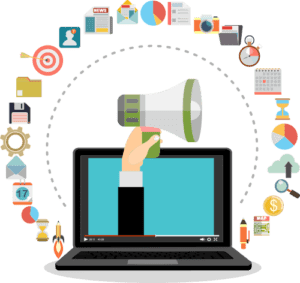The best way to explain this is through a hypothetical. Let’s say your site delivers 50 leads this week. What happens next?
In the “old” days, all those leads would have been handed to the sales team for follow up. The problem with this approach? Not all of those leads are ready for a sales conversation. In fact, there’s a good chance the majority of those leads aren’t ready for a sales conversation.
Begin with the buyer’s journey.
Awareness stage. People begin in the awareness stage when they research their options. And the people in this stage will vary widely.
For example, one couple might know they want to downsize in three years. Another example: An adult child might be hoping to move mom into new digs within 12-18 months. Either way, both types of prospects are in the early stages of research. They’re looking at websites, reading about amenities, checking out reviews, asking friends and family their opinions, and researching financing.
They’re not ready to talk to a sales rep who is looking to make a sale. So a call from the sales rep will be a waste of everyone’s time.
Instead, what these prospects need is helpful information that will guide them as they’re researching and learning. They need to keep your community’s name in their head—along with compelling reasons to go back to the site and read a little more deeply. Maybe there’s a nice article on the blog featuring some of the day trips residents have gone on. Or a Q&A with the community’s head chef. Or a helpful guide regarding how to approach finances.
Consideration stage. The consideration stage is often when a prospect will want to engage with sales—somewhat. The prospect might want to tour the community. Or discuss pricing. They’re not at the decision stage yet, but they welcome some interaction with sales. So wouldn’t it be helpful for the sales team to be able to easily identify someone in the consideration stage vs. the decision stage? Of course it would.
Decision stage. A lead in the decision stage IS someone who craves communication with a thoughtful sales rep. Someone who listens to their needs, answers their questions, and shows them what’s possible.
Marketing automation makes identifying which leads are in which stage so much easier.
Yes, you will need to set up the automation so that it understands the criteria your marketing and sales teams use to score leads. But once this is set up, the system will automatically score your senior living leads and deliver them to the appropriate next step.
For some leads, this might mean they’re delivered to the sales team for follow up. These leads will have clearly indicated—based on actions they’ve taken on your site—that they are in that consideration or decision stage. These are known as sales-qualified leads (SQLs).
Leads who are in the research or “dreamy” stage of “just starting to think about it” will be funneled into lead nurturing programs appropriate for them depending on who they are and where they are in their journey. These are known as marketing-qualified leads (MQLs).
Over time, the goal is to nudge MQLs along the path so that they turn into SQLs. Again, this happens AUTOMATICALLY in the background.
With “true” SQLs in hand, sales reps can remain hyper-focused on closing leads that are actually READY to close. Marketing teams can focus on creating compelling content for people who are truly marketing qualified. The marketing team can also monitor ROI and metrics. They can then create more content that effectively attracts the types of prospects you want, and they can retire content that’s ineffective.
Nice, right?



